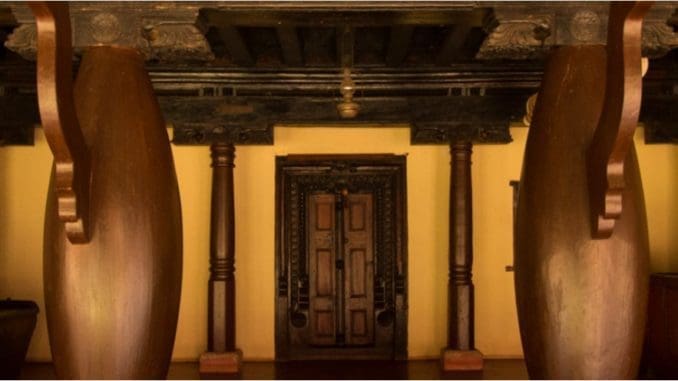
Nestled in a secluded corner of Manipal resides Hasta Shilpa Heritage Village, a time capsule whispering ancient secrets to those who care to venture in. Intrepid souls can meander through the hallowed annals of time, immersing themselves in the vibrant tapestry of yesteryears that paints a vivid portrait of the everyday existence in the South Canara region. Situated near Christ Church, Hasta Shilpa was conceptualized by heritage conservationist Vijaynath Shenoy in the 1970s, as a quest to create an edifying sanctuary.
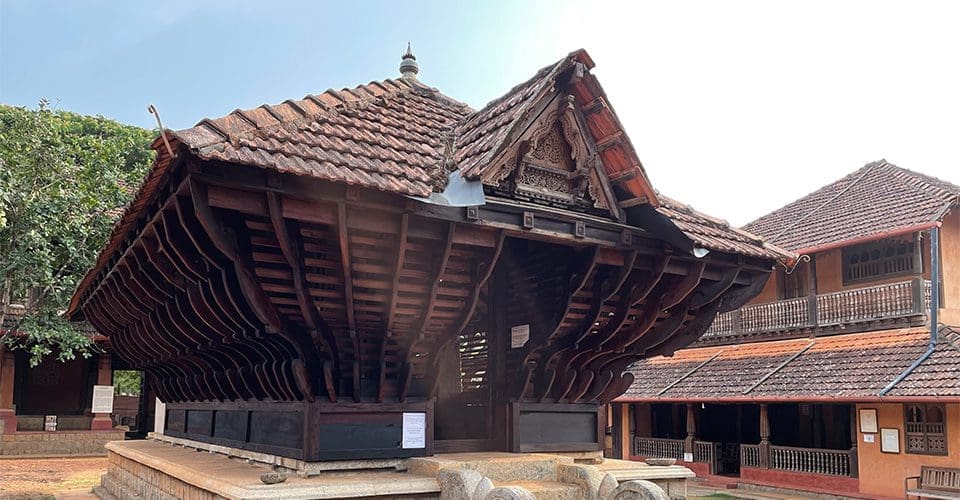
Much historical architecture has been demolished with time to make room for modern constructions. To preserve the land’s heritage, Shenoy’s vision began with collecting pieces from demolished historical sites to build his own home. These scraps from ancient relics eventually became an extensive conservation venture, with structures dating back to medieval times. The project took its current shape in the 1990s, encompassing the region’s heritage, craftsmanship, and architecture that would otherwise exist only in paintings of memory.
Hasta Shilpa Heritage Village – Nostalgic Reconstructions
Hasta Shilpa currently hosts a collection of over 24 buildings and galleries. Each building is a reconstruction of the original from the recovered and transported pieces. The insides represent their histories and stories with an extensive assortment of handicrafts, paintings, lithographs, instruments, furniture, and textiles.
The care and diligence put into the village are really accentuated by the distinct music playing in each house to match its spirit, as well as the use of different scents. Stepping into each home becomes a complete sensory experience of stepping back into a portal. These residences belonged to noblemen, merchants, and religious leaders, and as such, the restoration included shrines, bazaars, modes of travel, and household objects.
Current fascinating sites include the 19th-century colorful Maratha-style Mudhol Palace, transported from Bagalkot. It was influenced by Rajasthani architecture and crafted with local teak wood. Highlights of this structure include the hand-carved wooden frames and ceilings painted with vegetable dye.
The Mangalore Christian Home is built with Roman Gothic and British structures inspired by the Basel missionaries in the 1880s. It has fully decked-out bedrooms and a dining room that exceptionally captures life’s mundane aspects exceptionally well.
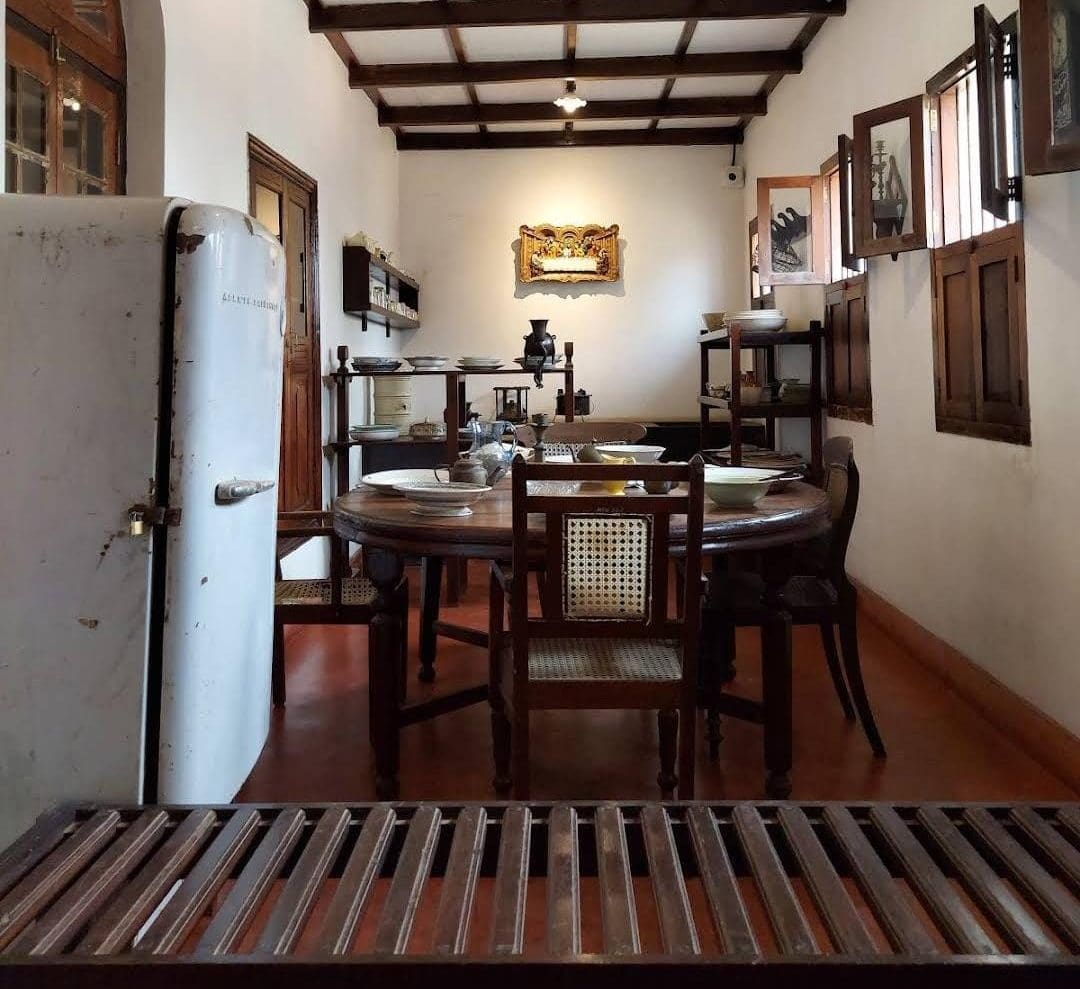
The Deccani Nawab Mahal from 1912 displays the ostentatious lives of the Nawabs. The central space was used for dance and musical performances, surrounded by other activities facilitating socializing and a viewing balcony on the upper level. This structure is notable for its use of imported stained glass and flooring tiles and its displays of antique furniture and artifacts.
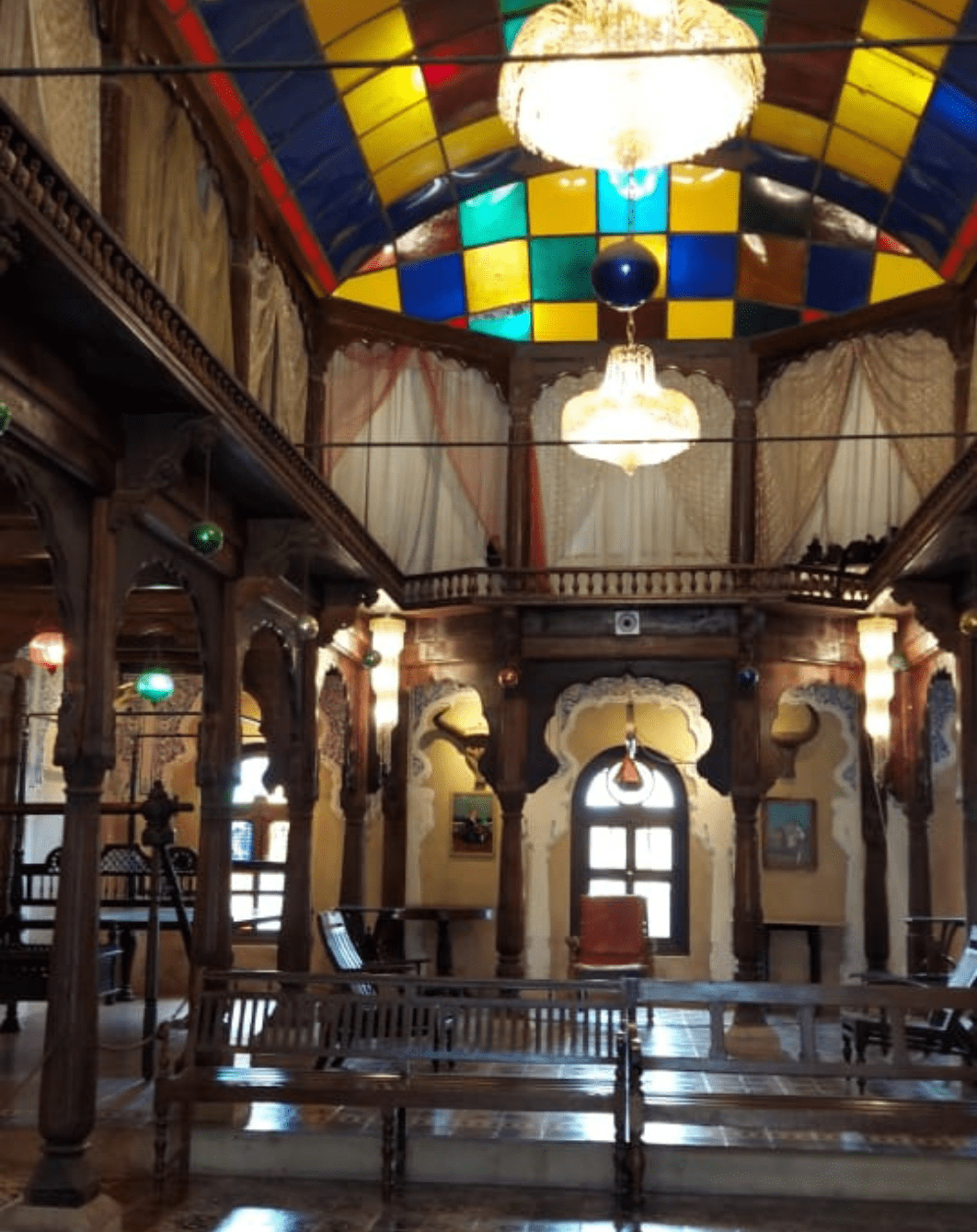
There is notably also a rare collection of tribal art from Bastar-Chattisgarh and folk deities of South Canara. The Nandikeshwara Shrine was created by renovating a natural rock outcrop within the site. It reflects the 5th-century Bhootakala tradition, a cultural practice of coastal Karnataka, and has been recreated using similar prototypes.
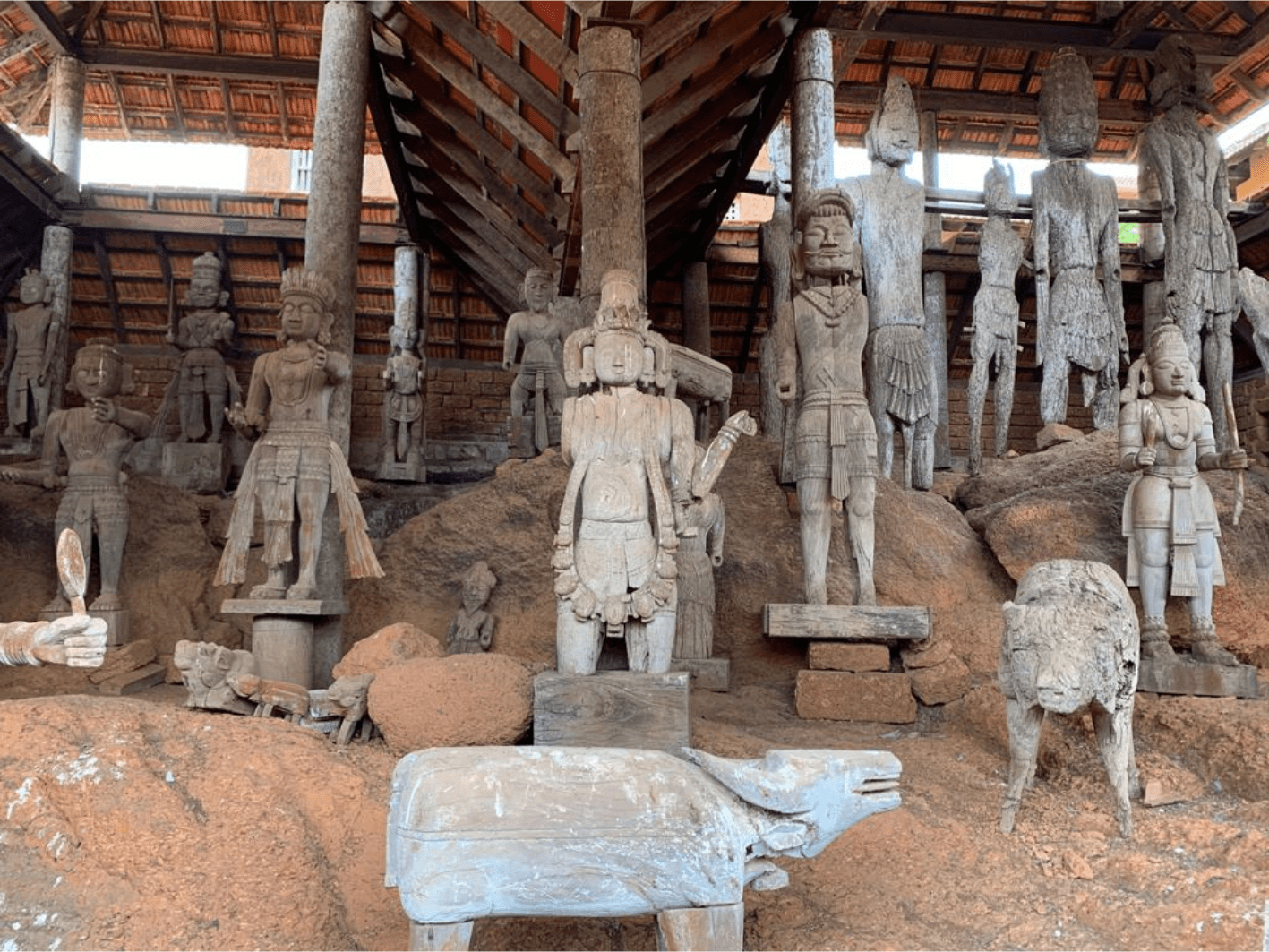
The best spot that captures the essence of the Hasta Shilpa Heritage Village project is the village’s bazaar street, lanes, and bylanes. The path guides travelers through reconstructions of mills, repair shops, ayurvedic stores, an elementary school, and many other stalls that display preserved items ranging from cookware and clothing to various early machinery.

Hasta Shilpa Heritage Village – Not Just a Museum
Vijanath Shenoy did not believe in museums. He wanted a place that felt like home, preservation of everyday life. Items in the Heritage Village aren’t hidden behind glass or labeled. Visitors are provided with a simple guide and are urged to walk through the place as if it’s a regular settlement.
A conversation with the site’s operation manager, Ramesh Mallya, revealed how much work goes into nurturing Shenoy’s vision of preserving and reviving culture through art and architectural traditions. He maintains that the place is a miracle that can never be recreated by anyone else. The best part of his work remains watching people from all generations coming to the site and experiencing it uniquely.
The project has a precarious future due to financial limitations and insufficient government funds. Yet he was adamant that the place needs to remain unsullied by commercialism to preserve its homely essence, letting it stay a hidden treasure sustained by people’s curiosity and wonder.
Hasta Shilpa Heritage Village is managed by a non-profit public charitable trust. Each building has been adopted by foundations capable of funding the site’s restoration, conservation, and promotion. The entry fee is 300/- for adults and 150/- for children and students. While the reach of the tour hasn’t returned to its pre-pandemic glory, this spot is still essential to visit while in Manipal. Avoid rain since you might not be let into the structures to prevent damage.




Be the first to comment